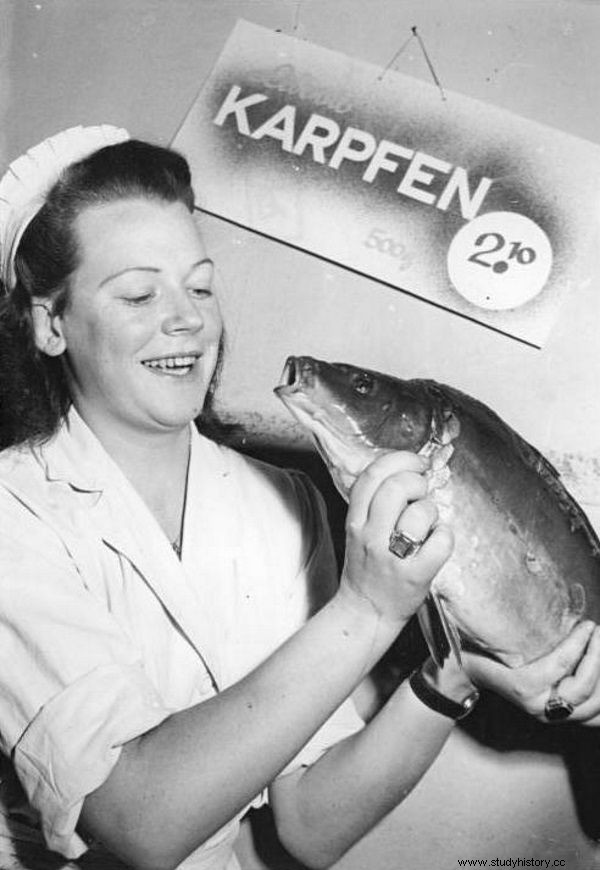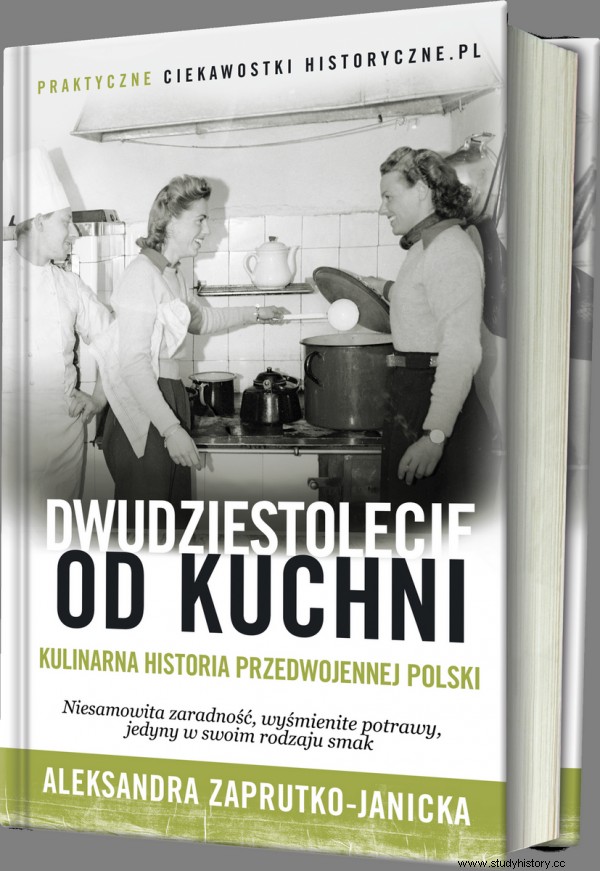In the peak of pre-Christmas fever, we are attacked from everywhere by advertisements with borscht, Christmas tree and carp, which almost becomes the symbol of the Star. Meanwhile, contrary to what marketers have been trying to squeeze us for years, carp on Christmas Eve are a relatively new invention.
What seems to us so deeply rooted in the tradition of Polish Christmas and even indispensable for our grandmothers was not at all related to tradition in any way understood!
The undeniable king of today's Christmas Eve tables in Poland is the royal carp. The strain that became so popular was not bred until the 19th century, however.
Although carp were eaten in many Christian homes already before World War II, these fish were associated mainly with Jewish cuisine. On the occasion of the holidays, zanders, pike were eaten, and in poorer families, tiny smelt and various other fish prepared in every way. Did carp also appear at that time?
Maria Gruszecka in her famous book 365 Lunches. Practical cookbook from 1930, it indeed mentioned carp as a Christmas Eve dish (next to borscht with dumplings, almond soup, fish patties, kale with chestnuts, green peas with croutons, roasted pike, zander with eggs, dumplings with plums, crispy dumplings, poppy seed pudding, pudding szodon and pies), but definitely was not in her view the main character of the supper.
In general, carp was one of the many dishes served on this special evening before the war. And at the same time:as one of several Christmas fish, not the only one.

Karp, photo from 1946 (photo Bundesarchiv, Bild 183-19000-0213, license CC-BY-SA 3.0)
Most often it took the form of "Polish carp":in a slightly sweet sauce, which owed its flavor to grated gingerbread, beer, raisins and a little honey.
Decommunizing the carp!
Coarse coating of carp and serving it at one dinner in a thousand ways is a post-war fashion. So if we were to subject the Christmas Eve menu to decommunization so fashionable today, the carp would probably not defend itself. Behind its popularization is a committed PZPR activist, member of the Central Committee, economist and minister of economy Hilary Minc.
He took over the portfolio on December 1, 1944 and held the function until 1949, when Poland was in complete ruin and was slowly getting up from its knees after the war. Minc decided to use the carp as a propaganda tool. It is grown relatively easily, does not require an extensive fleet of cutters to catch and is simply cheap.

Incredible resourcefulness, delicious dishes, unique taste. Learn about the female history of pre-war Poland in the book "Twenty years from the kitchen" by Ola Zaprutko-Janicka.
In the realities of that time, it was impossible to deliver a variety of fish to Polish tables. The shops of the Union of Enterprises "Centrala rybna", which dealt with the distribution of Polish sea and land fishing, could not provide Poles with a traditional, pre-war choice before Christmas.
Before the harsh wartime and post-war times, our grandparents liked to eat fish. It wasn't just carp for Christmas and mackerel and herring for the rest of the year! Cookbooks from that period are full of recipes for a wide variety of marine and freshwater fish. Looking only at the Christmas Eve menus, we see many species that would be considered extravagant if served on December 24th.
One of the most prolific and famous cooks of the interwar period, Elżbieta Kiewnarska, permanently publishing in Bluszcz, created a booklet with Christmas Eve recipes and gala dinner menus, grouped according to the size of the portfolio. Among the dishes offered at Wilije the most modest carp do not appear even once, but there are herring, zander and crucian carp.

Participants of the Christmas Eve at the Polish Embassy in Paris gathered by the Christmas tree in 1926. At that time, carp was not served in ten ways for Christmas Eve dinner (photo:public domain)
In four menus Wilije modest Carp appears only twice (once fried, once in sauce), and in addition to it, fried pike perch, bream in jelly, fried vendace with lemon, tench in onion sauce, stuffed smoked herring, ruffles, pike and roasted bream. Wilije more sumptuous they are to consist of even more species of fish (in addition to the aforementioned salmon, herring-hives, eel, burbot, sardines and perch).
The "Fish Headquarters", operating in the conditions of constant reconstruction of the country, could not provide such diversity. In order to somehow cover these shortages, people started to honk that it would be possible to bring the carp for Christmas, and people were happy that at least he would be there. What's more, instead of bonuses at workplaces also ... they got carp.
As a result, today it accounts for half of all freshwater fish caught in Poland. Therefore, it is worth remembering that people who try to bring less typical species of fish to the table on Christmas Eve do not so much undermine the old Polish custom of serving carp on that day, but restore the true Polish tradition!
Sources:
The article was based on the sources and literature used by the author during the work on the book "20 years from the kitchen. Culinary history of pre-war Poland ” as well as the information contained in cookbooks and the period press.
